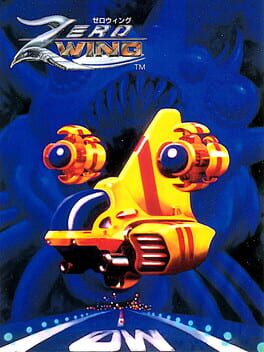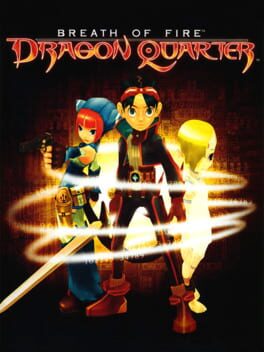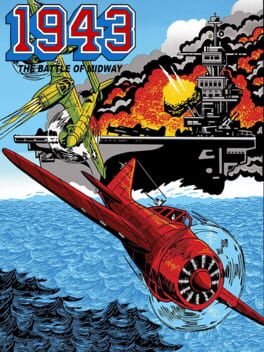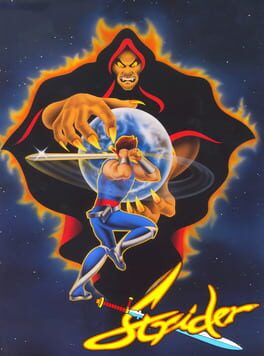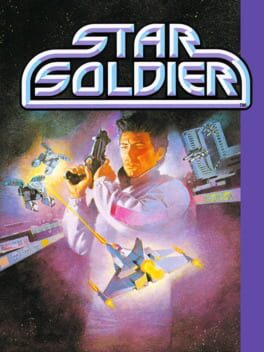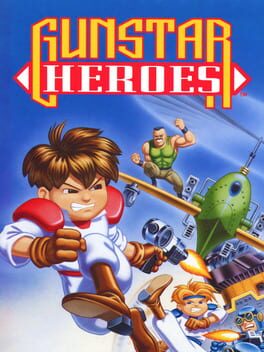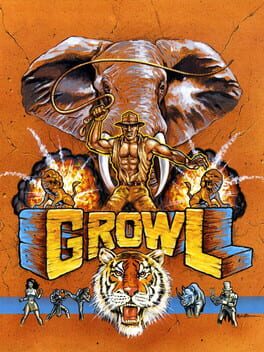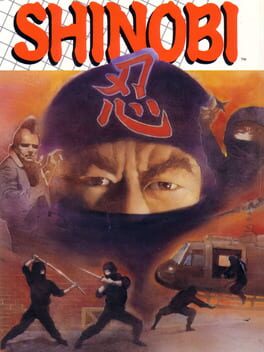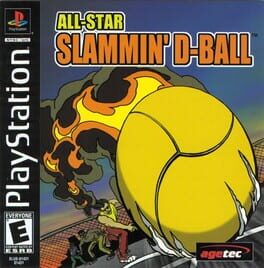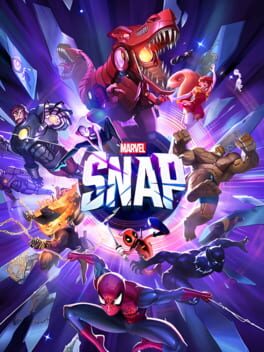ogremode
Castlevania is one of my favorite series of all time, and I was honestly looking forward to playing the black sheep, weird side-scrolling Zelda after I beat the first one. However, where I found the original game had excellent arcade combat, this game fails hard in that respect, making enemy encounters a grueling chore; I don't really like saying this about a game, but the design feels outright bad. Often the game will spawn enemies in places where it is impossible to dodge them, and getting hit (and killed) in this game is really punishing. Some enemies are fun to fight, and like in Castlevania, the best fights feel like a duel, or like you've solved a puzzle. Hopping and down attacking on the bouncing balls never got old. But some enemies, mostly the humanoid enemies like the Acheman, the Goriya, or the Fokka, Link feels wildly unequipped to fight, and there are some places where you are unable to use the strategies the games want you to use to beat them (mostly hopping forward and attacking as you come down). I found myself tediously save-stating throughout the game just to make it through some fights.
The RPG element is interesting, but underbaked. You level up from experience points gained from killing enemies, but you don't have any choice on how to build Link. The stats are strength, magic, and life, and all of the points are legitimately felt. It reminded me a bit of Breath of the Wild, where the experience points analogue in that game goes directly towards your mechanical experience of the game, which is something I love about that game. In the version of Zelda 2 I played, Link's stats went up in step with one another; I heard that there is another version of the game where you can choose which stat to place your experience point in, but that if you die then this gets reset to the lowest stat—so if you have a Strength at 9, and your lowest stat is a Magic at 5, then when you die your Strength gets reset to 5.
Like the first game, I played this game with a walkthrough. There's no guidance, and some parts can feel as hostile as the first game—to discover a town in this one, you have to use your hammer to cut down forests in the overworld until you find it. This game has all of the weaknesses of the first, but none of the strengths. Without a walkthrough, and without my incredibly stupid tendency to want to play series in chronological order, I can't imagine there being a great reason for playing this game. It's interesting to see how The Legend of Zelda evolves as a console RPG, alongside the contemporary Dragon Quest games, but it isn't fun, because these games are at their core action games, and the action here is awful.
The RPG element is interesting, but underbaked. You level up from experience points gained from killing enemies, but you don't have any choice on how to build Link. The stats are strength, magic, and life, and all of the points are legitimately felt. It reminded me a bit of Breath of the Wild, where the experience points analogue in that game goes directly towards your mechanical experience of the game, which is something I love about that game. In the version of Zelda 2 I played, Link's stats went up in step with one another; I heard that there is another version of the game where you can choose which stat to place your experience point in, but that if you die then this gets reset to the lowest stat—so if you have a Strength at 9, and your lowest stat is a Magic at 5, then when you die your Strength gets reset to 5.
Like the first game, I played this game with a walkthrough. There's no guidance, and some parts can feel as hostile as the first game—to discover a town in this one, you have to use your hammer to cut down forests in the overworld until you find it. This game has all of the weaknesses of the first, but none of the strengths. Without a walkthrough, and without my incredibly stupid tendency to want to play series in chronological order, I can't imagine there being a great reason for playing this game. It's interesting to see how The Legend of Zelda evolves as a console RPG, alongside the contemporary Dragon Quest games, but it isn't fun, because these games are at their core action games, and the action here is awful.
1989
Surveying the other shooters of 1989—Gradius III, Darius, R-Type II, Gunhed/Blazing Lazers—Zero Wing feels like the most modern, or at least the most fun, as Toaplan team inches closer to inventing bullet hell. The number of enemies on screen are low, and so is the number of projectiles, but the patterns are smart and force you to weave through them the way you'll have to in CAVE's games. The game is really fun to play all the way through, and even has some interesting ideas besides being a good horizontal Toaplan game.
The biggest notable feature of Z-Wing is the "Seizer Beam" system, where you can pull enemies and hold them in front of your ship. They can be used as one-off shields, and they can also be flung at other enemies to do a lot of damage. You sometimes pick up power-ups that place a bomb in front of you like this and are used in the same way. The upgrade system isn't anything new—keep picking up the icons the color of what you're already using, while avoiding the other colors, and you'll become more powerful. I never really like this system, but it's easy enough to work around. You also usually have two options firing directly above and below you, which are invincible and can absorb enemy fire, a lot like the options in bullet hell games.
Also Boss 7 is just the first boss from R-Type with some extra bullshit. What was up with that?
The biggest notable feature of Z-Wing is the "Seizer Beam" system, where you can pull enemies and hold them in front of your ship. They can be used as one-off shields, and they can also be flung at other enemies to do a lot of damage. You sometimes pick up power-ups that place a bomb in front of you like this and are used in the same way. The upgrade system isn't anything new—keep picking up the icons the color of what you're already using, while avoiding the other colors, and you'll become more powerful. I never really like this system, but it's easy enough to work around. You also usually have two options firing directly above and below you, which are invincible and can absorb enemy fire, a lot like the options in bullet hell games.
Also Boss 7 is just the first boss from R-Type with some extra bullshit. What was up with that?
(I really like this game, and only shelved it because God Hand has taken over my life.)
Breath of Fire: Dragon Quarter is most well-regarded for its unique loop that preceded similar designs in Dead Rising and FromSoftware's Souls games. At any moment during Dragon Quarter, you can reset to your last save point (using the Give Up option in the menu, then selecting SOL-Restore), which are typically placed at the beginning of dungeon sections and before bosses, or to the very beginning of the game (using the SOL-Restart), while maintaining your equipped weapons and armor, all of your skills, your money, and any items you place in a storage locker.
Most importantly, your characters "D-Counter" gets reset to whatever it was before your last save. The "D-Counter" is a percentage on your HUD that is constantly on-screen, which raises slowly as you move, but balloons in huge chunks when you activate the "D-Dive," which transforms your main character Ryu into an extremely strong and invincible dragon form. What this means is you can save at the start of the dungeon, use the D-Dive form to very easily stomp your way through the dungeon, collecting all the new skills and equipment, then use the SOL-Restore option to go back to the start of the dungeon with all those new skills and weapons but with your D-Counter reset to what it was when you saved earlier. Besides the new abilities you gained from completely clearing the dungeon, you also learn how to get around—the route to go directly to the end of the dungeon, and what enemies are absolutely required to get there. Dragon Quarter's encounters can be very difficult and item draining—enemies hit hard—so this knowledge is as important as the power ups you've found. I've played through all From's Souls games, and found this loop really familiar.
After you do the SOL-Restore, you can use the new power-ups you collected to fight your way directly to the end of the dungeon. For the initial D-Dive dungeon or boss runs, I would also set each of my characters shield skill to use the "steal" skill, which collects items, equipment, money, and, most importantly, skills, from the enemies that attack them; then on the regular run, I'd switch the shield skill to the "counter" skill or higher defense, and use the new skills to strengthen my characters. Since you can usually save right before bosses, you have as many chances as you want to steal unique items or skills they might be carrying. You can use one of your characters to profile enemies and see what items they might have; this list is updated as items are taken from them. As well, you will also find single use items that raise characters stats—physical attack strength, magic strength, and health points—and these changes carry over after SOL-Restoring.
Items and unequipped equipment that are in your inventory disappear during SOL-Restore, but in some levels you can find an Item or Weapon Locker vendor and place them there to save them. Your inventory gets reset to 5 Heal Kits, 1 Tonic, and a Save Token, and in fact you could conceivably farm these by SOL-Restoring or SOL-Restarting, placing your refreshed inventory in an item locker, then SOL-Restoring or SOL-Restarting again. If you find any "backpacks", which add more inventory slots, since the last save, these are also removed when resetting.
Dragon Quarter doesn't ever force you to SOL-Restore or SOL-Reset. You can scrape by going from encounter to encounter without ever resetting, but playing this way is miserable. I know, because I played this way for about five hours. A few hours in, I never had enough money to buy enough health items to offset the level of damage my characters were taking; as well, the damage I was doing to enemies was in the low 10s, making fights a totally unfun slog. I eventually hit a wall during an encounter with a bunch of humanoid enemies that overwhelmed me. I wasn't doing much damage, I didn't have enough health restoration items, and I didn't have any money to get more. I bit the bullet and used the SOL-Restore option to go back to the start of the game. I didn't exactly fly through the game to get back to where I was, but it was significantly easier to get there.
The game is really balanced towards using the SOL-Restore method, and when going through a section again after using it, you are also shown a new cutscenes, denoted by the SOL icon beside the Skip Scene icon in the corner. These tend to show different characters perspective, filling you in on what the supporting cast knows.
I had a good time with Dragon Quarter, and I might pick it up again sometime. I like the characters and the dreary, depressing tone; the game wears its Evangelion influence on its sleeve. However, the downside to its fascinating loop is that you have double the JRPG to playthrough, and I just don't have time in my life right now to feel comfortable spending that time on a single game that I don't completely love. However, it is absolutely worth checking out, and it's easy to see why this game clicks with people so much harder than it did for me.
Breath of Fire: Dragon Quarter is most well-regarded for its unique loop that preceded similar designs in Dead Rising and FromSoftware's Souls games. At any moment during Dragon Quarter, you can reset to your last save point (using the Give Up option in the menu, then selecting SOL-Restore), which are typically placed at the beginning of dungeon sections and before bosses, or to the very beginning of the game (using the SOL-Restart), while maintaining your equipped weapons and armor, all of your skills, your money, and any items you place in a storage locker.
Most importantly, your characters "D-Counter" gets reset to whatever it was before your last save. The "D-Counter" is a percentage on your HUD that is constantly on-screen, which raises slowly as you move, but balloons in huge chunks when you activate the "D-Dive," which transforms your main character Ryu into an extremely strong and invincible dragon form. What this means is you can save at the start of the dungeon, use the D-Dive form to very easily stomp your way through the dungeon, collecting all the new skills and equipment, then use the SOL-Restore option to go back to the start of the dungeon with all those new skills and weapons but with your D-Counter reset to what it was when you saved earlier. Besides the new abilities you gained from completely clearing the dungeon, you also learn how to get around—the route to go directly to the end of the dungeon, and what enemies are absolutely required to get there. Dragon Quarter's encounters can be very difficult and item draining—enemies hit hard—so this knowledge is as important as the power ups you've found. I've played through all From's Souls games, and found this loop really familiar.
After you do the SOL-Restore, you can use the new power-ups you collected to fight your way directly to the end of the dungeon. For the initial D-Dive dungeon or boss runs, I would also set each of my characters shield skill to use the "steal" skill, which collects items, equipment, money, and, most importantly, skills, from the enemies that attack them; then on the regular run, I'd switch the shield skill to the "counter" skill or higher defense, and use the new skills to strengthen my characters. Since you can usually save right before bosses, you have as many chances as you want to steal unique items or skills they might be carrying. You can use one of your characters to profile enemies and see what items they might have; this list is updated as items are taken from them. As well, you will also find single use items that raise characters stats—physical attack strength, magic strength, and health points—and these changes carry over after SOL-Restoring.
Items and unequipped equipment that are in your inventory disappear during SOL-Restore, but in some levels you can find an Item or Weapon Locker vendor and place them there to save them. Your inventory gets reset to 5 Heal Kits, 1 Tonic, and a Save Token, and in fact you could conceivably farm these by SOL-Restoring or SOL-Restarting, placing your refreshed inventory in an item locker, then SOL-Restoring or SOL-Restarting again. If you find any "backpacks", which add more inventory slots, since the last save, these are also removed when resetting.
Dragon Quarter doesn't ever force you to SOL-Restore or SOL-Reset. You can scrape by going from encounter to encounter without ever resetting, but playing this way is miserable. I know, because I played this way for about five hours. A few hours in, I never had enough money to buy enough health items to offset the level of damage my characters were taking; as well, the damage I was doing to enemies was in the low 10s, making fights a totally unfun slog. I eventually hit a wall during an encounter with a bunch of humanoid enemies that overwhelmed me. I wasn't doing much damage, I didn't have enough health restoration items, and I didn't have any money to get more. I bit the bullet and used the SOL-Restore option to go back to the start of the game. I didn't exactly fly through the game to get back to where I was, but it was significantly easier to get there.
The game is really balanced towards using the SOL-Restore method, and when going through a section again after using it, you are also shown a new cutscenes, denoted by the SOL icon beside the Skip Scene icon in the corner. These tend to show different characters perspective, filling you in on what the supporting cast knows.
I had a good time with Dragon Quarter, and I might pick it up again sometime. I like the characters and the dreary, depressing tone; the game wears its Evangelion influence on its sleeve. However, the downside to its fascinating loop is that you have double the JRPG to playthrough, and I just don't have time in my life right now to feel comfortable spending that time on a single game that I don't completely love. However, it is absolutely worth checking out, and it's easy to see why this game clicks with people so much harder than it did for me.
1986
What first struck me about the Legend of Zelda was the way it starts so abruptly; you're dropped into the world defenseless. You can go in any direction you want, but to be able to defend yourself you'll have to go into the pitch black spooky cave on the starting screen. In the cave is an old man with a sword: the lesson is that curiosity has its rewards. But I don't have time for that.
I'd been put off of playing this game for a long time due to the perceived difficulty—and it is difficult. However, I just decided to go ahead and use a walkthrough, since much of the game relies on placing bombs or blowing your candle in random places until you find some way to progress, which I wasn't interested in. I was afraid this would take away the major draw of the game—exploration—and while that definitely felt hindered, I got a lot of fun out of the moment to moment encounters. Having heard of Tower of Druaga's influence on this game, that was my biggest surprise with the game—that the Legend of Zelda's combat is actually really fun, though there's some sharp spikes of difficulty. It's genuinely fun to clear the screens of enemies, dodge their projectiles, learn their patterns so you can pop in at just the right moment to kill them. The game is also pretty short, so it never overstayed its welcome. I'm really glad I played through it, and I'm looking forward to playing the other Zeldas with this experience in mind.
I'd been put off of playing this game for a long time due to the perceived difficulty—and it is difficult. However, I just decided to go ahead and use a walkthrough, since much of the game relies on placing bombs or blowing your candle in random places until you find some way to progress, which I wasn't interested in. I was afraid this would take away the major draw of the game—exploration—and while that definitely felt hindered, I got a lot of fun out of the moment to moment encounters. Having heard of Tower of Druaga's influence on this game, that was my biggest surprise with the game—that the Legend of Zelda's combat is actually really fun, though there's some sharp spikes of difficulty. It's genuinely fun to clear the screens of enemies, dodge their projectiles, learn their patterns so you can pop in at just the right moment to kill them. The game is also pretty short, so it never overstayed its welcome. I'm really glad I played through it, and I'm looking forward to playing the other Zeldas with this experience in mind.
1987
It's hard to overstate what a massive step forward this feels like for the shooter genre, which until this point may be fun in parts but often feels extremely punishing so it can wring quarters out of you until you've memorized exactly where the enemies are coming from for the game's length. Toaplan's Flying Shark! is a a difficult, but completely playable, vertical shooting game, and it's more often than not pretty fun to actually play. If Tiger-Heli was a rudimentary version of the Toaplan model, this is a complete core model that the future vertical games would be built off of. Really disappointing that the Toaplan Arcade garage games aren't coming Stateside, because I'd love to own this on the Switch without having to import it.
1989
Strider is a cool looking action game—the sprites and backgrounds are excellent, and Strider's animations as he flips or attacks looks cool as hell. However he doesn't feel as agile as he looks—it can feel a little awkward handling him. The way you run through levels while things explode around you reminded me a bit of Gunstar Heroes, and the way Strider builds momentum when running down hills felt a lot like playing the first Sonic game. Like most arcade games the challenge here is a combination of skill based action and memorizing when and where enemies are, and where to go; the most frustrated I felt playing this game was at the end of one of the levels, where you have to jump on a floating ship in the right-hand corner of the map. It just isn't well communicated.
Really worth playing though, it's an interesting and novel arcade game, even if it doesn't completely work.
Really worth playing though, it's an interesting and novel arcade game, even if it doesn't completely work.
1986
1985
1993
1991
1987
Played the Sega Ages version on the Switch. I enjoy Rolling Thunder-likes and had a good time blasting through this one. This is a ninja themed game where you also get a gun for some reason. The Sega Ages release also lets you map the melee attack to a different button, which makes it a lot more reliable than hoping the contextual action button works out in your favor.
The sprites look nice, and there's an okay variety of enemies—three or four different types and a few palette swaps. The bosses are cool, but I don't like the way the first boss feels—you have to hit the samurai's head Dracula style, but it's at a really awkward spot in your jump arc; melee makes it a little easier. I liked taking down the huge helicopter and the final ninja, who has a lot of tricks up his sleeve.
Altogether this is a pretty tolerable early arcade action game, and I'm looking forward to playing the sequels.
The sprites look nice, and there's an okay variety of enemies—three or four different types and a few palette swaps. The bosses are cool, but I don't like the way the first boss feels—you have to hit the samurai's head Dracula style, but it's at a really awkward spot in your jump arc; melee makes it a little easier. I liked taking down the huge helicopter and the final ninja, who has a lot of tricks up his sleeve.
Altogether this is a pretty tolerable early arcade action game, and I'm looking forward to playing the sequels.
An arcade style dodgeball game developed by a small developer named Access, for D3 Publisher's Simple series, brought over to the States by A1 Publishing, who also published underrated Shooter: Starfighter Sanvein in the US, and Agetec, who published dozens of well-known Japanese games in the States too many to list but including Armored Core and Raw Danger. I played this game a lot as a kid in multiplayer and always liked it. The sprites look good, and there's a hint of achievable technical mastery that is unfortunately let down by the execution—dodging and catching just feels really inconsistent, which is too bad, like it doesn't read your inputs correctly or something. Not the best of these budget games, but I have a lot of nostalgia for it.
2022
I played this game every day between October 1 and February 7. The gameplay of Snap is excellent, and for a while the treadmill is really enticing—I earned new cards at a pace and in an order that successfully sparked some inspiration in the new combos I could try. When that happened, I could play dozens of games whittling the new deck and strategy down, until I got something new that did the same thing, and so on. As deck variety increases so does strategic complexity, and the game is excellent at getting you time and opportunity to explore its systems; there's not many explicit tutorials, but the card effects are simple and the rate at which your decks grow feels so natural. It must be said the card game itself feels really well-designed and balanced, and for many characters right on theme. I had a great time for a long time.
However, as I reached collector level or whatever 2000, the pace of new cards, let alone new cards that inspired new decks of strategies to play with, had slowed almost to a halt. I had plenty of different deck archetypes that were strong and fun to play, but playing them over and over was wearing thin, and often due to this game's strange match making I found myself playing against the same kind of decks I was using over and over, and when I rarely played against a player with a significantly different deck they had some higher tier cards I didn't even have in my deck yet that were frustrating to play against. I probably maintained between a 50% and 60% win rate, if not lower than that, and since you lose cubes or whatever when you lose, I would get to a certain tier in the battle pass and just stick there, constantly floating around the 40s. I felt like I wasn't making any progress in any of the games many progress areas, and for a while just continued playing to complete the daily missions, with the idea that eventually I would open a card that made the game feel fun again. It finally felt like the game was trying to get me to spend money, for the sheer possibility that I might, just maybe, get something out of it. I did some of the battle passes over this period, but as late in the game as I was it no longer felt worth it, and I spent days trying to get myself to stop playing, since at this point it had become a habit to pop it open whenever I had a couple minutes.
Then the shitty Marvel movie tie-in battle pass showed up and reminded me I actually hate all this shit, so I haven't played since. Still, I don't regret my time with it. Marvel Snap was a really fun game until it wasn't.
However, as I reached collector level or whatever 2000, the pace of new cards, let alone new cards that inspired new decks of strategies to play with, had slowed almost to a halt. I had plenty of different deck archetypes that were strong and fun to play, but playing them over and over was wearing thin, and often due to this game's strange match making I found myself playing against the same kind of decks I was using over and over, and when I rarely played against a player with a significantly different deck they had some higher tier cards I didn't even have in my deck yet that were frustrating to play against. I probably maintained between a 50% and 60% win rate, if not lower than that, and since you lose cubes or whatever when you lose, I would get to a certain tier in the battle pass and just stick there, constantly floating around the 40s. I felt like I wasn't making any progress in any of the games many progress areas, and for a while just continued playing to complete the daily missions, with the idea that eventually I would open a card that made the game feel fun again. It finally felt like the game was trying to get me to spend money, for the sheer possibility that I might, just maybe, get something out of it. I did some of the battle passes over this period, but as late in the game as I was it no longer felt worth it, and I spent days trying to get myself to stop playing, since at this point it had become a habit to pop it open whenever I had a couple minutes.
Then the shitty Marvel movie tie-in battle pass showed up and reminded me I actually hate all this shit, so I haven't played since. Still, I don't regret my time with it. Marvel Snap was a really fun game until it wasn't.
2011
I've been really excited about the Resident Evil 4 Remake, and couldn't wait to dig into the demo tonight. It looks great, but I wish I liked it more. The encounters feel sparse, broken up with cinematic, tension building exploration sequences that nonetheless feel like filler. There's a few more cutscenes, some of which trigger based on your behavior, like the chainsaw enemy cutting up part of the level as he chases you, which is a cool addition and again looks sick, but snatching away control as you're trying to fight off the village feels terrible and weirdly antiquated. The changes to the combat don't seem to be in its favor either--RE4R is faster than the original game, but also weightier, more animation driven, and as a consequence it doesn't feel half as good as the original game, which is slow, but snappy. Maybe I'll feel differently playing the full remake, as I adjust to these changes, though I feel like I'd just have more fun replaying the old game. There's also a surprising emphasis on stealth, which is the opposite of what I want from this game. I also encountered a bug where Leon got stuck on a corner and got killed, which made the whole experience feel even worse.
I booted up Resident Evil 4 HD immediately after playing the demo, and played through the village for my second time tonight. It's plainly so much more fun, so much more gamey. Enemies fell to their knees and Leon sent them flying, knocking down a group of enemies like bowling pins. I don't know how you modernize such an arcade feeling, perfect action game to modern standards without losing what makes it excellent. And unfortunately, it looks like Capcom doesn't either.
I booted up Resident Evil 4 HD immediately after playing the demo, and played through the village for my second time tonight. It's plainly so much more fun, so much more gamey. Enemies fell to their knees and Leon sent them flying, knocking down a group of enemies like bowling pins. I don't know how you modernize such an arcade feeling, perfect action game to modern standards without losing what makes it excellent. And unfortunately, it looks like Capcom doesn't either.

